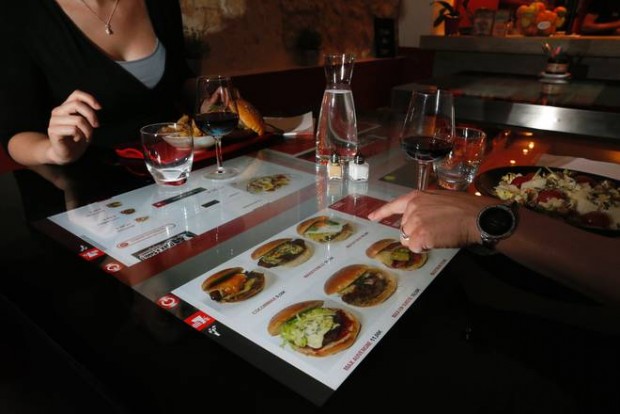
Among the new trends of 2018, concerning the management of the restaurant we find the Digital Restaurants. In this article we will try to understand together what is meant by Ristorante Digitale and what the customer will be able to do digitally.
Restaurateurs have to adapt to the customer demand for digitization, a challenge that can bring great benefits as technology also offers effective tools to improve restaurant management. It allows to coordinate the activities, providing an excellent service, able to attract customers; allows you to expand the gastronomic offer, as users find information on the web and are more open to trying out new ingredients and dishes; facilitates loyalty as it allows you to offer personalized experiences.
We therefore bring you the various things to do in a “digital” form in a restaurant. You can order the dishes directly from the smartphone, pay the bill using an app, customize the menu with a simple click, book a table thanks to a digital platform and rate the service, or the chef’s cooking skills, on the web page of the restaurant.

But what are the advantages of a digital restaurant?
First of all, we discover that thanks to digitization, even restaurants that are not in the center can have greater visibility. The reviews of customers, or positive feedback released online, will do nothing but bring new people into the room, thus encouraging a word of mouth on the network can increase the number of customers.
The use of software allows restaurants to optimize bookings and operations, and to improve service and revenues. It is a practice successfully used in the tourism sector that allows you to vary prices depending on availability.
There are several levels of Digital Restaurants:
1.Restaurants that for the moment do not want to attract more customers and do not have a long-term business vision should try to offer a wifi connection and a Facebook page.
2.Restaurants that want to attract more customers and understand network-related opportunities are focused on specialized portals, have a website, receive online reservations and are on social networks. These are structures that are moving from paper to digital and whose staff are becoming familiar with online booking management software.
3.The restaurant that has the majority of customers who book online and who is dedicated to personalizing the service to retain them. It has many tools to increase sales and save time and restaurant management software, use social media, have a website with the booking button and respond to reviews.
4.Restaurants that use technology to provide multi-sensory experiences, such as augmented reality glasses or interactive tables. These facilities are fully managed digitally, using statistics and data provided by the management system to make business decisions, make investments in marketing and email marketing campaigns, manage online opinions and are attentive to their online reputation.
5.Restaurants without tables and chairs: this is a new business model, where food is prepared exclusively for home delivery. The relationship with the customer is always mediated by a mobile application.

Digital restaurants
To make the customer experience as unique and personal as possible, companies in the sector must pay attention to consumption habits, activity history and interactions through apps or social networks. All information can be exploit to offer the consumer what he wants and even anticipate his requests. The needs of the catering sector today concern the ability to exploit information to build a tailored customer experience.
It is necessary to put the customer first, that is the center of attention. It is a question of recognizing the customer and proposing his favorite dishes, already in the box or at the time of ordering. When the consumer feels pampered, he is more likely to return to the room for another dinner, perhaps to add a dessert to his order and leave a positive review by sharing his experience on social networks.
Restaurant software innovations can transform problems into opportunities. Because, despite having complex functionalities and capable of managing all internal processes and interactions with customers, they are to be used by employees.
The applications developed for restaurants are born and developed for the consumer, for this we need to go beyond the simple, allowing the customer to pay the bill via mobile.
The optimization of the marketing strategy can be continuous also thanks to access to real-time data on customer interactions to be transformed into new initiatives and activities. Depending on the objectives, the promotion of the brand and the interaction with the public will help to reach them in different ways, but always with a scientific track of the results.


